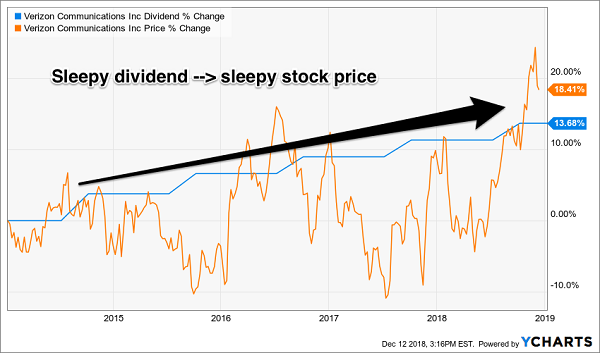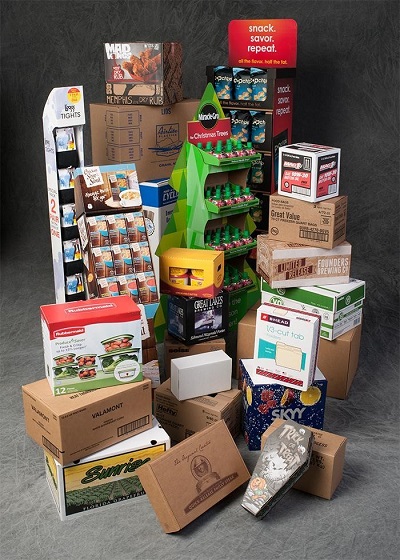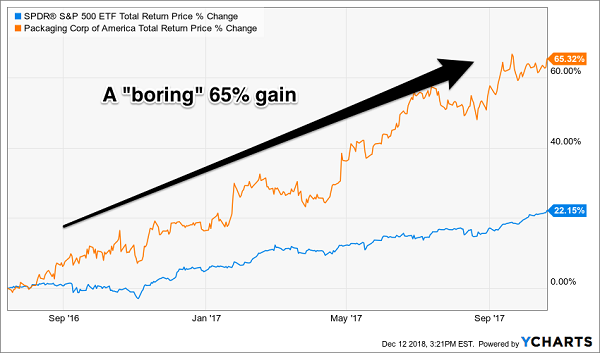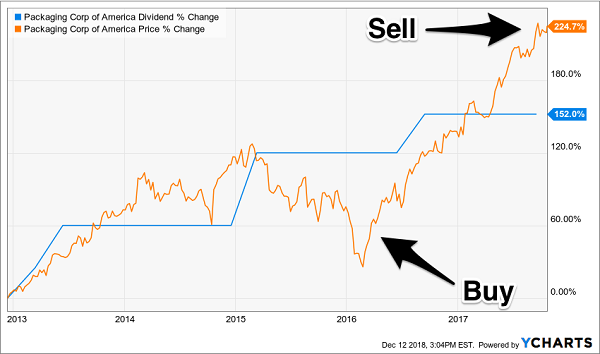Moe Ansari, host of the popular Market Wrap radio show and podcast, recently asked me on air:
“Brett, how do you find dividend paying stocks that will double your money?”
He was intrigued enough by my analysis to ask me on his show, but I knew he was a bit skeptical as well. And that’s perfectly normal – even experienced investors and money managers like Moe think of dividend payers in terms of their current yields only.
Price appreciation potential often gets ignored, and the thought of achieving 100%+ profits from a safe dividend payer sounds absurd. But smart investors bank their payouts while their stocks double in price – whether it’s a bull, bear or sideways market.
(Want to hear me describe this strategy in detail? Click this link for the full interview.)

Subscribers to my Hidden Yields service know the three-step formula that I explained to Moe well. In fact, our “dividend doubling” portfolio has earned 13.7% yearly gains since inception three-and-a-half years ago. We’re more than halfway to 100% total returns.
How’d we do it buying safe dividend paying stocks? Let me walk you through the simple three-step formula. (And shortly I’ll show you how to get your hands on my latest research, which features nine dividend stocks likely to double, too.)
Step 1: Buy Dividend Growth for 10%+ Annual Gains
On the show we discussed Verizon (VZ), which has piqued the interest of many income investors lately. The stock yields 4.1%, and the dividend is covered by monthly cell phone bills across America.
But don’t buy Verizon in hopes of a double – it’s not going to happen. Its 4.1% yield would get us repaid in 18 years. That’s not fast enough for our purposes, so we would need to look to dividend growth to fill the gap and speed up the pace of our profits.
Problem is, even though Verizon raises its payout every single year, the stock is barely moving in absolute terms! A sleepy 13.7% cumulative dividend increase over the last four years has rocked its share price to sleep (a mere +18.4% over the entire time period):
Verizon’s Dividend “Growth” Rocks Its Shares to Sleep

For double-digit price appreciation, we must buy dividends destined to grow by 10% or more annually. This means we need to find businesses that are booming (with higher profits driving higher payouts). To do so, it helps to focus on stocks that are, well, kinda boring.
Step 2: Buy Boring Cash Cows
In 2016 my Hidden Yields subscribers and I took a page from Peter Lynch’s book and used it to bank 61% returns in just 15 months. Lynch guided Fidelity’s Magellan Fund to average returns of 29% per year from 1977 to 1990. He constantly obsessed over a stock named Crown, Cork, and Seal because its corporate name and actual business were both just so perfectly boring. He wrote in One Up On Wall Street:
“When you find a company that has a boring name, does boring things and has good earnings then buy their stocks when they are cheap and not trendy.”
Crown makes beverage packaging, metal closures and caps, and aerosol cans. Not exactly a Silicon Valley “unicorn” like Uber, Airbnb or Snapchat – but it delivered 20%+ gains to Lynch year after year after year!
So we tipped our cap to him when we purchased Packaging Corp. of America’s (PKG), the lowest-cost producer of containerboard in America. The firm weaves its paper into packaging for everything from produce to in-store displays. Like these:

As much as we liked the looks of these displays, we loved the stock. It was cheap, trading for just 12-times free cash flow (FCF) and paying a 3.1% dividend. And this didn’t make much sense, as I wrote at the time:
“You’d expect these multiples on a slow growth stock – not one that has increased its sales and FCF by 171% and 283% respectively over the last five years.”
We made a prescient purchase. The sale on this containerboard didn’t last long. The stock brought us 65% total returns in just 15 months, tripling up the S&P 500 in the process:
What a Boring 65% Gain

Most of our gains have been thanks to investors realizing this “boring” stock deserves a higher price with respect to its payout and its cash flows. This is a common benefit of buying bargain dividend growers.
So are PKG shares still a compelling play today? Let’s move on to step three to see.
Step 3: Greedy for Gains? Only Buy a Dividend That Lags
Dividends are magnets that pull their share prices along with them. If you’re looking for the stock market’s tail that wags the dog, pay attention to the payouts attached to a given share price.
Steps one and two help us lock in double-digit yearly gains. But if we’re looking for quick (50%+) upside, we should only buy stocks that are “lagging” their payouts.
This is exactly the setup we enjoyed with PKG. We bought the stock when its price (jagged orange line) dropped behind its ever-increasing dividend (steady staircase blue line):
Buy the Lag, Sell the Lead

Since dividends follow their share prices higher, we can make the most money by buying when these payouts are most likely to “snap higher” towards their runaway dividend curves.
In other words, we buy the price dips when the dividend appears to be running away. Anyone who says you can’t time stocks hasn’t used this surefire strategy for buying shares ready to “catch up” to their runaway payouts.
It’s simple:
- Plot a stock price versus its dividend,
- Look for a “lag” between the shares and the payout, and
- Buy any big lags you see.
Let’s do this again for PKG. Looking back, we can now see that we were smart to buy low and sell high. (And thank you, PKG dividend, for showing us these opportunities clearly.)
Today, PKG may be flashing “buy” once again. Its stock price has pulled back below its payout growth trend, which is always an encouraging sign.
Time to Buy PKG Again?

But there’s more to 100%+ profits than these relatively simple indicators. Otherwise, everyone would be doubling their money in the stock market! We also must look at the cardboard industry itself to see if PKG do indeed deserve a 50% premium from here (which is the distance between their current levels and their higher dividend).
Don’t worry, I’ve done the work for you. Here’s how you can receive my latest dividend growth research and recommendations in your email inbox this Friday.
Coming This Friday: 9 Dividend Payers with 100% Upside
How much money should you allocate to pursuing dividend stocks that will double your money?
As you can see, as much as possible. This dividend growth strategy is such a “slam dunk” for investing returns that there’s no reason to collect more current yields than you need right now. There are three big benefits to buying dividend payers that are likely to double your money.
Benefit 1. You invest a set amount of money into one of these “hidden yield” stocks and immediately start getting regular returns on the order of 3%, 4%, or maybe more.
That alone is better than you can get from just about any other conservative investment right now.
Benefit 2. Over time, your dividend payments go up so you’re eventually earning 8%, 9%, or 10% a year on your original investment.
That should not only keep pace with inflation or rising interest rates, it should stay ahead of them.
Benefit 3. As your income is rising, other investors are also bidding up the price of your shares to keep pace with the increasing yields.
This combination of rising dividends and capital appreciation is what gives you the potential to earn 20% or more on average with almost no effort or active investing at all.
Which future “dividend doubles” should you buy today? Well, you know me – I’ve got seven best buys in this special that should safely double your money in the months ahead.
Plus, I have not one but two brand new recommendations I’ll deliver to your email inbox this Friday as a thank you for signing up!
Remember dividend growth strategy has produced steady 13.7% annualized returns for my Hidden Yields subscribers since inception. In three-plus years we’ve cruised past the broader market.
If you achieve returns of 13.7% annually, you’ll double your money in less than six years. So if you haven’t been following this strategy, why not? The best time to get started is right now – before the dividend payers I mentioned begin to move. Click here and I’ll share their names, tickers and buy prices with you right now.
